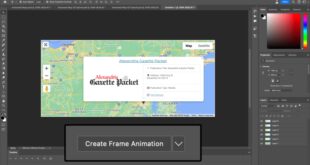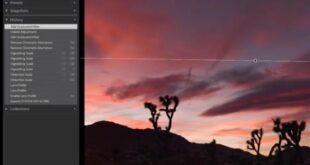How To Create Detailed Digital Illustrations In Photoshop With Ease – This is the third step and the main part of the preparation for creating a digital image from a photo or photoshopped image. The previous step of the tutorial where I prepared the base image can be found here. In this part I will explain how to enhance your original image/work in 4 different ways, which can create a high resolution digital image.
If you want to join the image I use, you can download the file here. Simply unzip the file and open the .JPG file in Photoshop (as a Smart Object if you prefer). Feel free to post your results, but I would greatly appreciate it if you could provide credit or a link to this tutorial.
How To Create Detailed Digital Illustrations In Photoshop With Ease
This next part of the digital photography tutorial will use Studio 2 from Topaz Labs to create the basic working layers, but of course you can use other programs and action plugins that produce similar results.
Use The Oil Paint Filter In Photoshop To Turn Photos To Paintings
For this tutorial, I’m assuming you have Adobe Photoshop installed (I’m using the Photographer subscription) and Topaz Studio 2. The older Topaz Impression and Abstraction plugin (standalone or combined with Topaz Studio 1) also works, but may require different settings to achieve similar results.
The Impression filter/plugin is a huge time saver when creating digital images because I was painting these layers by hand and now I can focus on the main part of creating the image with this amazing plugin. Of course you will like the different way of painting everything by hand, I just show you how I create the works that I post.
We’ll start with the original image and name this layer “Original” by double-clicking on the layer name and renaming it “Original” if it’s a normal layer. For me, this is usually a smart layer that I open from Lightroom (I edit/open as a smart object in Photoshop) or another Photoshop output.
I won’t be touching this “Original” layer during the entire process, so this will be a backup for comparison.
Digital Painting Portrait
If your original layer is a normal layer, duplicate the original layer twice and name the first copy “Base” and the second “Base Color”.
If your “Original” layer is a smart object (like in my case), click “Layer” in the Photoshop menu, create a new layer on top of the original layer, then choose “New” and then “Layer” and name it. “Base” layer. ‘. Now simultaneously press SHIFT+CMD+OPTION+E on Mac or SHIFT+CTRL+ALT+E on PC to make the stamp a visible layer. Now duplicate the created ‘Base’ layer again, right click on the ‘Base’ layer and select ‘Duplicatie’. Rename this new layer to “Base Color”.
The “Primary Color” layer will be the first layer used in Topaz Studio 2, so select it from Photoshop’s “Filter” menu. The program will launch when your image is uploaded.
When you open a photo or image in Topaz Studio 2, click the blue Add Filter button and a list of filters will appear. In the Stylistics section, look for the “Abstraction” filter.
Which Are The Best Brushes For Digital Painting?
Adjust the slider to simplify the size until you lose all the details. I usually choose a value between 30 and 60, depending on the type of image I’m working on.
Once you are satisfied with the results, you can apply the filter by clicking the “Accept” button in the upper left corner of the main screen.
Then duplicate the “Base Color” layer and rename this copy to “Rough”. You can do this by selecting the “Primary Color” layer, then selecting “Layer” from the Photoshop menu and clicking “Duplicate Layer…”. Name the new layer “Rough”.
With the “Rough” layer selected, select “Filter” from the menu and select the Topaz Studio 2 plug-in again. You will be returned to the main Studio 2 screen. Click the blue Add Filter button again, this time look for the Effect filter under the Style section. Now things get interesting! 🙂
How To Paint Skin ( Step By Step) ! “digital Painting On Clip Studio Paint Tutorials. #1” By Moonlight.wisteria
In this step, we need to create a rough painted version of the image. Don’t forget to adjust the texture (a last resort), but you can play around to get the best result that suits your taste.
As you can see, I increased the “Paint Opacity” a bit to make the brush strokes a bit sharper or more contrasty. Lowering this slider gives a much softer effect.
Raising the Paint Volume slider gives a very saturated and structured image for me, but not at this level of the image. We will add this later. By changing Move Spin and Spin Variation, you change the shape of the strokes. Also a very nice touch later in this tutorial.
I increased the “Color Tint” slightly to show a little more variation in the colors.
How Would I Go About Digitizing My Pencil Drawings In Order To Print Them With Shading? Any Help Much Appreciated.
I kept it at 0.00, but this will be different for all images depending on the image type. A rough layer for a portrait, for example, I use longer and wider brushes.
The Spilled slider also increases the contrast and texture of the strokes, so I raised it a bit, while the Spilled slider blurs the brush strokes. I play with the contrast and texture of the strokes by lifting the spills and stains, but the rough layer in my work usually has a softer look with less contrast and a softer texture with the brushstrokes.
The “Color” and “Lighting” sections should be left at their default values, and the “Texture” section should be set to zero.
When you’re done playing and you’re happy with the results, click Accept and save the effect to a rough layer, or if you plan to create more digital images using this method, look at what you just created earlier before receiving the filter. Simply click “Save As” in the top right corner of the main window and name it something like “Grave Image”. We are done with this layer for now.
Photoshop Elements 2024 For Dummies (for Dummies: Learning Made Easy): Obermeier, Barbara, Padova, Ted: 9781394219599: Amazon.com: Books
Then select the “Base Layer” that contains your original image/work and duplicate it, name the duplicated layer “Medium” and repeat this twice more naming these layers “Fine” and “Ultra Fine”. Turn off the visibility of the Fine and Ultra Fine layers for now.
Repeat the following steps from the “Rough” layer, but with slightly different settings. Since we are now using the base image as input for the effects filter, we have more data to work with.
Select the “Medium” layer, select “Filter” from the Photoshop menu and “Topaz Studio 2”. Click the blue Add to Filter button again and select the Effect filter.
This time I selected the first (default) brush stroke, set the brush size and color volume to Medium, and increased the color opacity.
Digital Tutorial: Edit Your Journal Cards In Photoshop Elements To Work For You! — Traci Reed Designs
I left all other settings at their defaults, but feel free to play around and adjust this layer to your liking. The main thing here is that it should be a layer with an average amount of details and colors.
When you’re done, don’t forget to save the view for later use and click Accept to save the results to the middle layer.
Then add a full black mask to the “Medium” layer to make this layer invisible. A shortcut for this is to hold the parameter/name by clicking on the mask icon below the layer panel.
If all goes well, you should see the contents of the “Rough” layer on the screen.
How To Apply A Cyanotype Effect To A Photo
Next, select the “Good” layer, make it visible again by clicking the eye icon to the left of the layer icon, and repeat the steps above for the “Medium” layer using these settings in the screenshot as a guide here, but play around. for myself.
Since I’m a big fan of the default brush, I also used this brush stroke for the “Nice” layer.
Play with the contrast and texture of this layer again and adjust the Bleed and Bleed sliders. The purpose of the fine layer is to show finer details.
Don’t forget to save the view when you’re done, so the next time you want to do a similar project, you can do this step faster. Even in the event that you or your computer crashes, you can simply start over and select scenes you’ve already done without wasting too much precious time.
30 Cool Photoshop Photo Effects To Add Style & Wow
Speaking of broken computers, it’s probably time to save your documents if you haven’t already. 🙂
Back in Photoshop, when the good layer is finished, active and visible, you can mask the layer again by holding down the option/alt key and clicking the little mask icon below the layers panel. Of course, another option is to add a black mask and fill it with black.
Now we are
 Alveo Creative Blog Guiding users through techniques for enhancing images, retouching portraits, and mastering popular editing software
Alveo Creative Blog Guiding users through techniques for enhancing images, retouching portraits, and mastering popular editing software




